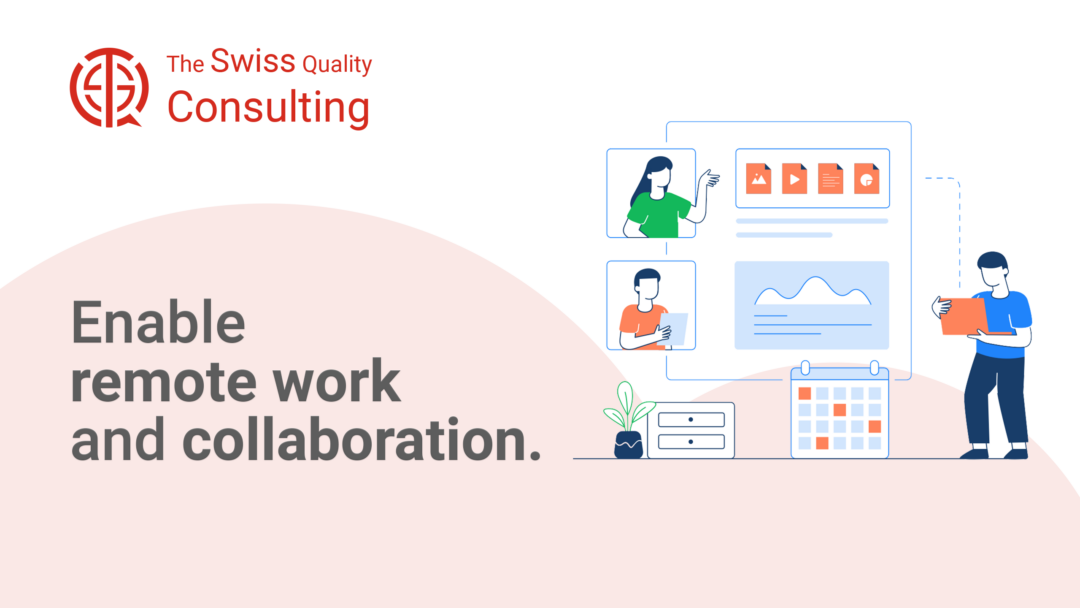Enabling Remote Work and Collaboration in the Modern World
The world as we know it has seen a tremendous shift in the way people work and collaborate. Advancements in technology have made it possible for individuals and teams to work together without the need for physical proximity. Remote work and collaboration have become essential components of the modern work environment, offering a myriad of benefits to both employers and employees. In this text, we will explore the evolution of remote work and collaboration, discuss the advantages and challenges, and offer practical tips on how to make the most of this dynamic working model.
Remote Work: A Paradigm Shift
The concept of remote work is not new, but it has certainly evolved over the years. In the past, remote work was limited to specific industries and job roles, such as freelance writers or consultants. However, with the advent of high-speed internet, cloud computing, and a wide range of digital tools, remote work has become accessible to a much broader spectrum of professions.
One of the primary driving factors behind the rise of remote work is the pursuit of a better work-life balance. Commuting to and from the office can be time-consuming and stressful. By allowing employees to work from the comfort of their homes or other remote locations, employers are providing them with the flexibility to structure their workdays in a way that suits their individual needs and lifestyles.
Collaboration in the Digital Age:
Remote collaboration goes hand in hand with remote work. As teams are distributed across various locations, collaboration tools have become indispensable. These tools range from video conferencing platforms like Zoom and Microsoft Teams to project management and communication apps like Slack and Trello. Such tools enable employees to connect, communicate, and collaborate seamlessly, no matter where they are located.
The Advantages of Remote Work and Collaboration:
1. Increased Flexibility: Remote work allows employees to create a work environment that best suits their needs, which can lead to increased job satisfaction and overall well-being.
2. Cost Savings: Employers can save money on office space, utilities, and other facilities, while employees save on commuting expenses.
3. Wider Talent Pool: Companies can hire the best talent regardless of their location, which can result in a more diverse and skilled workforce.
4. Boosted Productivity: Many remote workers report higher productivity levels due to reduced workplace distractions.
5. Reduced Environmental Impact: Fewer employees commuting to the office means a decrease in carbon emissions and a more eco-friendly approach to work.
The Challenges of Remote Work and Collaboration:
1. Communication Hurdles: Miscommunication can occur more easily in remote settings. Effective written and verbal communication are critical.
2. Isolation and Loneliness: Some remote workers may feel isolated and miss the social aspects of office life.
3. Security Concerns: Data security and privacy can be challenging when employees work from various locations.
4. Work-Life Boundaries: Without clear boundaries, remote workers may find it difficult to disconnect from work.
5. Technical Issues: Dependence on technology can lead to problems if there are network or software issues.
Making Remote Work and Collaboration Work for You:
To make remote work and collaboration successful, here are some practical tips:
1. Set Clear Expectations: Establish clear guidelines for work hours, communication channels, and expected outcomes.
2. Leverage Technology: Invest in reliable communication and collaboration tools to ensure seamless connectivity.
3. Foster a Culture of Trust: Trust is essential for remote work. Employers should trust their employees to manage their work, and employees should trust their employers to provide the necessary support.
4. Stay Connected: Regular check-ins, virtual meetings, and team-building activities can help maintain a sense of camaraderie and connection.
5. Maintain Work-Life Balance: Set boundaries between work and personal life to prevent burnout and maintain overall well-being.
Remote work and collaboration have become integral aspects of the modern work landscape, offering flexibility, cost savings, and a wider talent pool. While challenges exist, clear communication, trust, and the right tools can help overcome them. By embracing this dynamic working model, both employers and employees can reap the benefits and continue to adapt to the ever-evolving nature of work.
#RemoteWork #Collaboration #WorkEnvironment #ModernWork #Productivity

